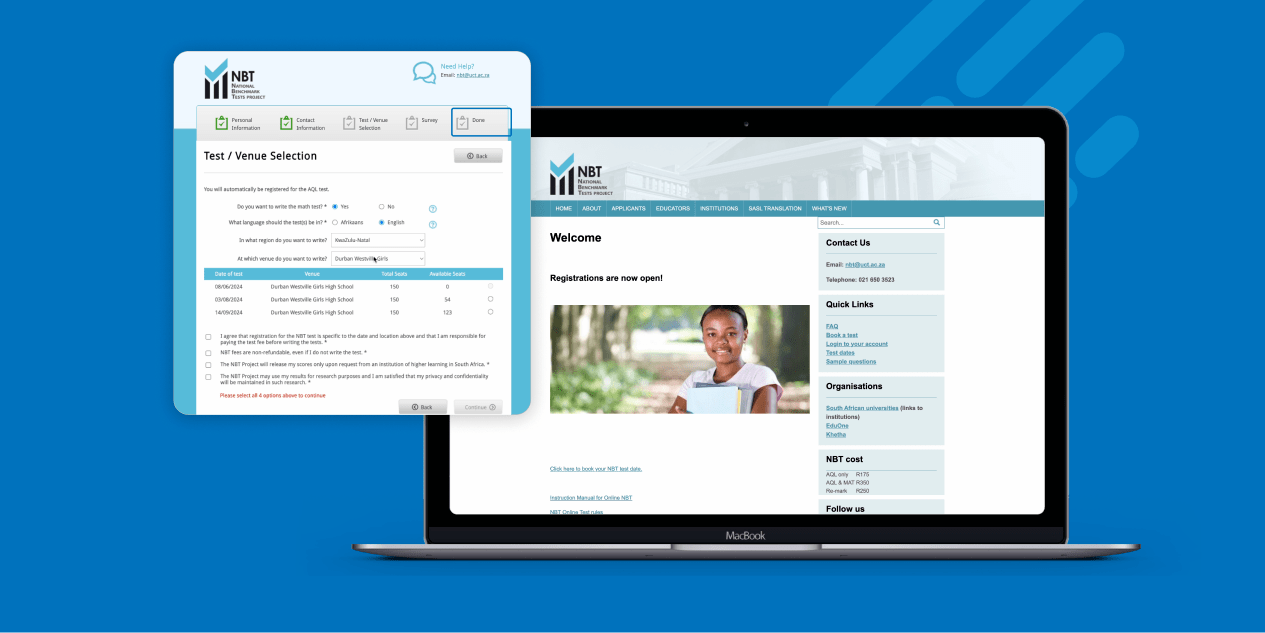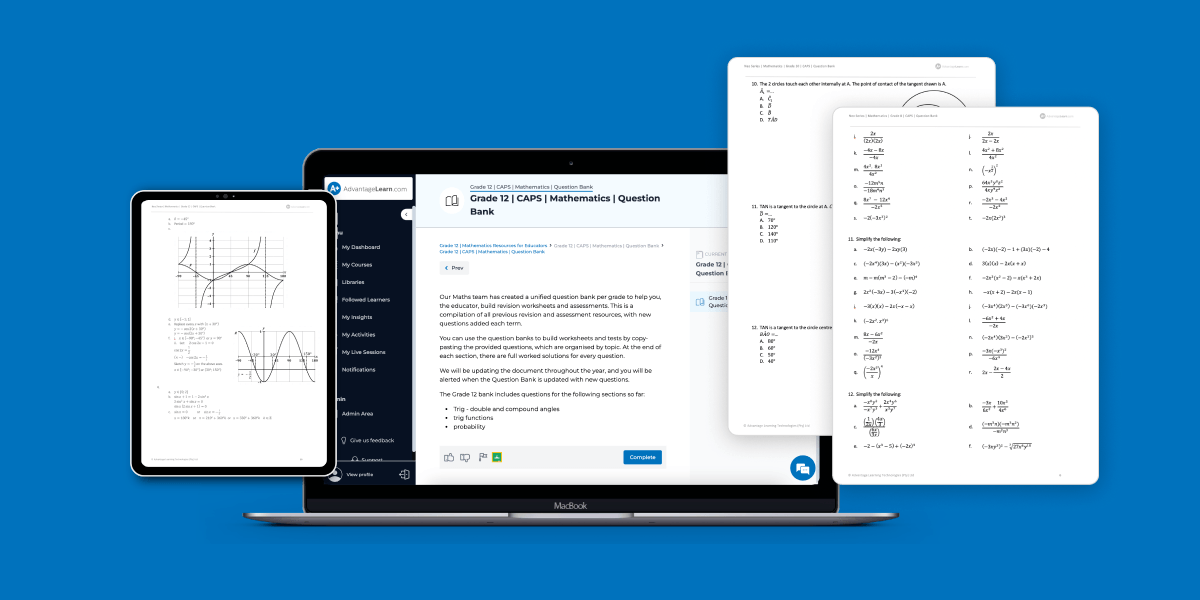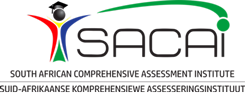
Real Life Careers: Architect
Student article


This article is the eighth in our series on ‘Real Life Careers’ in which we chat to people about their career and look at the (sometimes unexpected) paths they took to get there. We chatted with James Claassen – a Project Architect in Durban. James (30) holds a Bachelor of Architectural Studies (B.A.S) and Master of Architecture (M.Arch) from UKZN and a Professional Architect (Pr.Arch) with SACAP (South African Council for the Architectural Profession)
High school
We asked James some questions about on his high school experiences and choices and how they may have impacted him later in life.
Q: What subjects did you take at school?
A: English, Afrikaans, maths, art, physical science and geography.
Q: What were your favourite subjects at school?
A: Art, physical science (physics and chemistry) and geography.
Q: Would you say any of your favourite subjects have been helpful to your degree and current career?
A: Yes. All three for various reasons which are as follows:
Art: The development of my visual communication and understanding the world through art due to design history discussion and analysis. Architecture requires strong visual presentation skills which range from sketching/drawing and graphic, to succinctly presenting ideas. A degree in architecture also has a heavy theoretical underpinning which requires an understanding of the theoretical movements that impacted architectural design.
Physical science: Understanding how our physical world (materials) react and interact with their surroundings. The term architect essentially comes from Greek, meaning master builder. An architect must have an intimate understanding of not only how buildings are built, but how each material behaves.
Geography: For the broad stroke introductions to topics such as climatology, ecology, geology and urban studies. As an architect, having a broad understanding of the world is a huge advantage. Geography provides introductions to many topics, as mentioned above. As an architect, understanding how the natural world impacts the built environment (and vice versa) assists in inducing a more effective architectural design.
Q: What skills that you learnt at school have proved helpful?
A: Communication. Both verbal and written.
Q: What do you wish you had done more of while at school?
A: I wish that I learnt more Zulu – I think it is imperative to learn another language other than English. I also wish I had learnt to read music. Music is a fantastic creative language, which in my opinion is like a piece of architecture. It has a set of patterns and rhythms strung together to form an enjoyable product. Lastly, I wish I had learnt programming/coding. I think learning a programming language will be essential to any industry in the future. Architecture is essentially using design to solve ‘problems’. I think it would be advantageous if I knew another creative medium such as programming.
Music is a fantastic creative language, which in my opinion is like a piece of architecture.
Q: Were you aware of your current career path when you were in high school?
I had an interest in design and construction from a young age, but my choice of studying architecture was reinforced by an aptitude test.
University
There are a few general considerations to be made when leaving school and heading into varsity, as well as when one is considering postgraduate studies. James shares some of what affected his decisions and what he has learned in hindsight.
Q: Did you take a gap year, and why?
A: No. I think I had no desire to at that stage. However, in hindsight, I think a structured, varied gap year of “alternative learning” should be encouraged. I think it would have given me the opportunity to engage in different activities while maturing, and probably shaping/confirming my understanding of what I wanted to study at university. Looking back now I would have engaged in more activities like community service, entrepreneurship courses and learnt how to ‘make things’ (welding, carpentry, sewing etc, car mechanics, plumbing, electrics).
In hindsight, I think a structured, varied gap year of “alternative learning” should be encouraged.
Q: Did you get into your first choice Degree/institution?
A: Yes
Q: Did you start tertiary education pursuing the degree you ended with?
A: Yes
Q: What attracted you to pursue the Degree and career you did/are?
A: Architecture provides you with a varied skillset at the end of the course. Essentially, studying architecture equips you to solve problems through creative thinking. The degree is holistic in that you learn concepts from a wide range of subjects, which include engineering, science and art/design. I enjoyed this holistic education as it broadened my horizons.
Q: Is your current career path related to your Degree?
A: Absolutely
Q: Have you done postgraduate studies and would you do so again if you went back to the end of undergrad?
A: Yes, absolutely.
Q: Have you taken any ‘breaks’ during your studies?
A: I had a 5-year break between my undergrad and postgrad, during which time I worked full time in the architectural and engineering fields.
I made the decision to take a break between my Bachelor and Master’s  degree as I was not sure at that stage that I wanted to remain in the architectural field. Additionally, receiving an undergraduate degree does not automatically grant you acceptance into an M.Arch programme as admission to the Master’s programme requires a comprehensive application, which includes a creative portfolio of work, a letter of motivation, a CV, relevant work experience and acceptable undergraduate marks. I gained admission in my second round of applications.
degree as I was not sure at that stage that I wanted to remain in the architectural field. Additionally, receiving an undergraduate degree does not automatically grant you acceptance into an M.Arch programme as admission to the Master’s programme requires a comprehensive application, which includes a creative portfolio of work, a letter of motivation, a CV, relevant work experience and acceptable undergraduate marks. I gained admission in my second round of applications.
Receiving an undergraduate degree does not automatically grant you acceptance into an M.Arch programme.
Career
In this section, James answers some questions that are specific to his current career. This gives us insight into some of the realities of being an architect.
Q: Do you have a specific focus or speciality within your field?
A: No
Q: What does your job involve day to day?
A: Day to day activities can vary depending on at what stage the building project is. There are 6 stages to a building project which have varying activities for each stage. Unfortunately, architects don’t just draw/sketch all day long but are required to perform a host of other responsibilities.
The responsibilities involved in these stages range from developing initial sketch designs all the way to supervising and project managing the construction of the design. Depending on the scale of the building, this process can take a few years before the finished product takes shape. While a majority of the work is drawing-based, there are a lot of administrative roles that need to be filled such as coordinating and leading a professional team, liaising with the client and contractors, project management (and budget management to a lesser extent), managing the building contract and creating construction drawings and details that enable the design to become a reality. Communication is key in architecture: not just clear visual communication but clear written and verbal as well.
Q: What ‘things’ would you recommend individuals who are wanting to go into your field (general or specific) to consider that they may not be aware of?
A: Subjects at school:
Many are surprised by this but technical drawing is not an essential requirement. Rather, creative ‘out of the box’ thinking and being a quick learner are far more advantageous skills.
Also, while there are maths and physics with an architecture degree, they have a quite minor presence.
Getting the degree:
Architecture is a long road of study, with a 3-year undergraduate degree, followed by a minimum of 1 year of in-service training concluding with a 2-year post graduate degree.
Both undergraduate and postgraduate degrees have a heavy workload, which requires many hours of blood, sweat and tears to be invested into the degree. Unfortunately, a degree in architecture has very specific career path but the skills learnt can be of benefit in other industries.
Something important to note is that architecture is quite an expensive degree with comparatively very few bursaries available. When I was at university, a degree in architecture was one of the most expensive courses to study.
After university, you are required to register with SACAP (South African Council for the Architectural Profession) and gain 2 years of work experience before you can write the Professional Practice Exam (board exam).
Practising architecture:
Architecture is very much reliant on the economy; a client needs money in order to build and therefore it has it’s boom times and slumps. The bigger the city generally the more work there is for architects. While architecture is a creative field you are also  required to have an understanding of engineering (electrical, structural, civil, mechanical etc) and also have knowledge of building law/ building contract law, understand how building regulations impact the design etc.
required to have an understanding of engineering (electrical, structural, civil, mechanical etc) and also have knowledge of building law/ building contract law, understand how building regulations impact the design etc.
Architecture is a business and is reliant on getting, and holding onto, good clients. In my experience, these skills are not taught at university. Therefore having some business management/ entrepreneurship training is a huge plus.
Architecture requires creative thinking to solve problems in a practical, cost-effective and, most importantly, in an aesthetically pleasing manner.
Keep an eye out for the next post in our ‘Real Life Careers’ series.
This article was originally published on 25 Apr 2017
About the author
Jax Heilgendorff
I have watched the development of AL.com for years and marveled at the ingenuity and passion shown from the start. As a Linguistics major, university lecturer and burgeoning copywriter, the Advantage Learn story is one close to my heart. I hope to add to the development of educational thinking in South Africa by helping to relate topics and create spaces for thought on the challenges and opportunities facing South African learners, students, and parents.

How to book your NBT test: a step-by-step guide
NBT
Featured
Booking your National Benchmark Test (NBT) is a crucial step in your journey towards university admission in South Africa. Here’s a detailed guid... Read more

Resource Drop: Grade 8-12 Maths Question Banks
Maths
Education
Neo Series
Featured
As educators ourselves, we understand the myriad of challenges faced when curating materials for effective teaching and assessment. It’s a balancing ... Read more

Class of 2023 Further Studies Results
Further Studies
Thriving on a challenge The Independent Examination Board (IEB) released the results of their International Secondary Certificate (ISC) on the... Read more
Do you want better Maths results?
Maths Online is a bank of over 2000+ extra lessons. Furthermore, gain access to our teacher support to help you when you need it!
More info

























